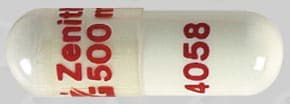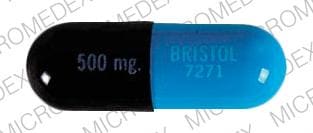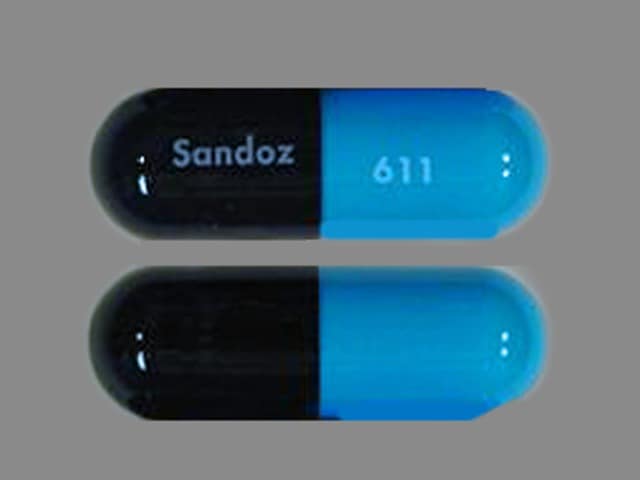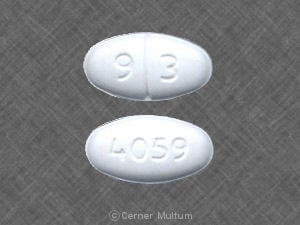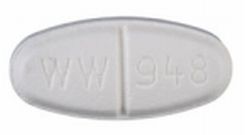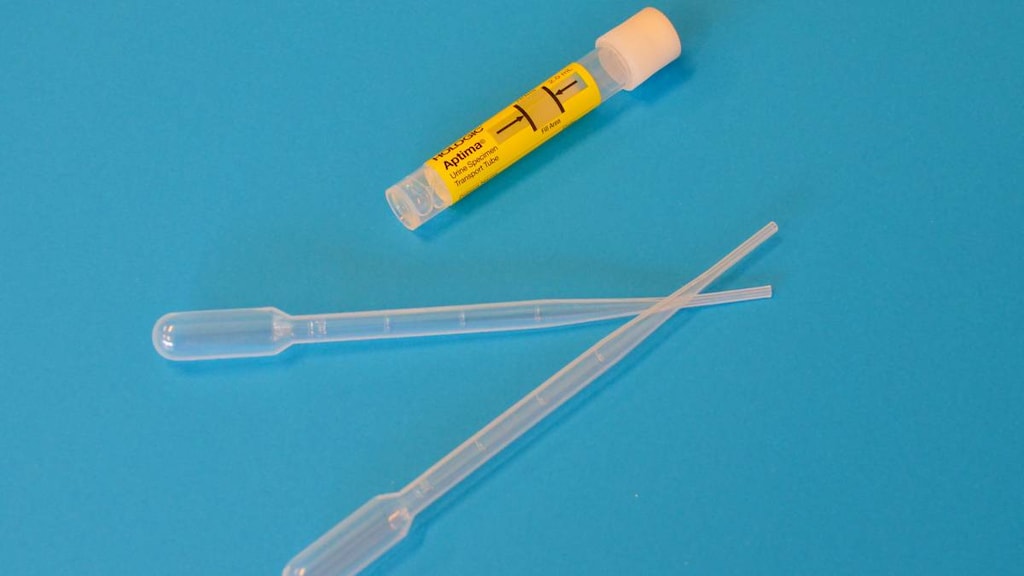Dosage Forms
Excipient information presented when available (limited, particularly for generics); consult specific product labeling.
Capsule, Oral:
Generic: 500 mg
Suspension Reconstituted, Oral:
Generic: 250 mg/5 mL (50 mL, 100 mL); 500 mg/5 mL (75 mL, 100 mL)
Tablet, Oral:
Generic: 1 g
Pharmacology
Mechanism of Action
Inhibits bacterial cell wall synthesis by binding to one or more of the penicillin-binding proteins (PBPs) which in turn inhibits the final transpeptidation step of peptidoglycan synthesis in bacterial cell walls, thus inhibiting cell wall biosynthesis. Bacteria eventually lyse due to ongoing activity of cell wall autolytic enzymes (autolysins and murein hydrolases) while cell wall assembly is arrested.
Pharmacokinetics/Pharmacodynamics
Absorption
Rapid and well absorbed from GI tract
Distribution
Vd: 0.31 L/kg
Excretion
Urine (>90% as unchanged drug within 24 hours)
Time to Peak
Serum: Within 70 to 90 minutes
Half-Life Elimination
1 to 2 hours; 20 to 24 hours in renal failure
Protein Binding
20%
Use: Labeled Indications
Pharyngitis and/or tonsillitis: Treatment of pharyngitis and/or tonsillitis caused by Streptococcus pyogenes (group A beta-hemolytic streptococci).
Skin and skin structure infections: Treatment of skin and skin structure infections caused by staphylococci and/or streptococci.
Urinary tract infection: Treatment of urinary tract infections caused by Escherichia coli, Proteus mirabilis, and Klebsiella species.
Use: Off Label
Prosthetic joint infection with Staphylococci (oxacillin-susceptible)yes
Based on the Infectious Diseases Society of America (IDSA) guidelines for the management of prosthetic joint infection, cefadroxil is an effective and recommended agent for chronic oral antimicrobial suppression of prosthetic joint infection with Staphylococci (oxacillin-susceptible) after completion of parenteral therapy.
Contraindications
Hypersensitivity to cefadroxil, any component of the formulation, or other cephalosporins
Dosage and Administration
Dosing: Adult
Prosthetic joint infection, staphylococci (oxacillin-susceptible), chronic oral antimicrobial suppression (off-label use): 500 mg every 12 hours (Osmon 2013)
Skin and skin structure infections: Oral: 1 g daily in a single or 2 divided doses
Streptococcal pharyngitis (group A) (alternative agent for mild [non-anaphylactic] penicillin allergy): Oral: 1 g once daily for 10 days (IDSA [Shulman 2012]; Pichichero 2018; manufacturer’s labeling)
Manufacturer’s labeling: Dosing in the prescribing information may not reflect current clinical practice. 500 mg twice daily
Urinary tract infection (UTI) (alternative agent):
Note: Use with caution and only when recommended agents cannot be used (due to decreased efficacy of oral beta-lactams compared to other agents) (Hooton 2018a; ESMID/IDSA [Gupta 2011]; Greenberg 1986; Sandberg 1990).
Cystitis, acute uncomplicated: Oral: 500 mg twice daily (Greenberg 1986; Hooton 1995) for 5 to 7 days (Greenberg 1986; Hooton 2018a)
UTI, complicated (including pyelonephritis): Oral: 1 g twice daily (Sandberg 1990) for 10 to 14 days (Hooton 2018b; Sandberg 1990). Note: Oral therapy should follow appropriate parenteral therapy. For outpatient treatment of mild infection, a single dose of a long-acting parenteral agent is acceptable; for outpatients who are more ill or are at risk for more severe illness, consider continuing parenteral therapy until culture and susceptibility results are available (ESMID/IDSA [Gupta 2011]; Hooton 2018b).
Dosing: Geriatric
Refer to adult dosing.
Dosing: Pediatric
General dosing, susceptible infection: Mild to moderate infection: Infants, Children, and Adolescents: Oral: 15 mg/kg/dose twice daily; maximum daily dose: 2,000 mg/day (Red Book [AAP 2015])
Impetigo: Children and Adolescents: Oral: 30 mg/kg/day in a single dose or divided every 12 hours; maximum daily dose: 1,000 mg/day
Pharyngitis/tonsillitis: Children and Adolescents: Oral: 30 mg/kg/day in a single dose or divided every 12 hours for 10 days; maximum daily dose: 1,000 mg/day
Skin and skin structure infections: Children and Adolescents: Oral: 15 mg/kg/dose every 12 hours; maximum daily dose: 1,000 mg/day
Urinary tract infections: Children and Adolescents: Oral: 15 mg/kg/dose every 12 hours; maximum daily dose: 2,000 mg/day
Reconstitution
Powder for suspension: Refer to manufacturer’s product labeling for reconstitution instructions. Shake vigorously until suspended.
Administration
Oral: Administer around-the-clock to promote less variation in peak and trough serum levels. Administer without regards to meals; administration with food may diminish GI complaints.
Storage
Store capsules, tablets and unreconstituted oral suspension at 20°C to 25°C (68°F to 77°F); excursions are permitted to 15°C to 30°C (59°F to 86°F). After reconstitution, oral suspension may be stored for 14 days under refrigeration (4°C).
Cefadroxil Images
Drug Interactions
BCG (Intravesical): Antibiotics may diminish the therapeutic effect of BCG (Intravesical). Avoid combination
BCG Vaccine (Immunization): Antibiotics may diminish the therapeutic effect of BCG Vaccine (Immunization). Monitor therapy
Cholera Vaccine: Antibiotics may diminish the therapeutic effect of Cholera Vaccine. Management: Avoid cholera vaccine in patients receiving systemic antibiotics, and within 14 days following the use of oral or parenteral antibiotics. Avoid combination
Lactobacillus and Estriol: Antibiotics may diminish the therapeutic effect of Lactobacillus and Estriol. Monitor therapy
Probenecid: May increase the serum concentration of Cephalosporins. Monitor therapy
Sodium Picosulfate: Antibiotics may diminish the therapeutic effect of Sodium Picosulfate. Management: Consider using an alternative product for bowel cleansing prior to a colonoscopy in patients who have recently used or are concurrently using an antibiotic. Consider therapy modification
Typhoid Vaccine: Antibiotics may diminish the therapeutic effect of Typhoid Vaccine. Only the live attenuated Ty21a strain is affected. Management: Vaccination with live attenuated typhoid vaccine (Ty21a) should be avoided in patients being treated with systemic antibacterial agents. Use of this vaccine should be postponed until at least 3 days after cessation of antibacterial agents. Consider therapy modification
Vitamin K Antagonists (eg, warfarin): Cephalosporins may enhance the anticoagulant effect of Vitamin K Antagonists. Monitor therapy
Test Interactions
Positive direct Coombs', false-positive urinary glucose test using cupric sulfate (Benedict's solution, Clinitest®, Fehling's solution), false-positive serum or urine creatinine with Jaffé reaction
Adverse Reactions
1% to 10%: Gastrointestinal: Diarrhea
<1%: postmarketing, and/or case reports: Abdominal pain, agranulocytosis, anaphylaxis, angioedema, arthralgia, cholestasis, Clostridioides (formerly Clostridium) difficile-associated diarrhea, dyspepsia, erythema multiforme, erythematous rash, fever, genital candidiasis, hepatic failure, increased serum transaminases, maculopapular rash, nausea, neutropenia, pruritus, pseudomembranous colitis, serum sickness, Stevens-Johnson syndrome, thrombocytopenia, urticaria, vaginitis, vomiting
Warnings/Precautions
Concerns related to adverse effects:
- Hypersensitivity reactions: Hypersensitivity reactions, including anaphylaxis, may occur. If an allergic reaction occurs, discontinue treatment and institute appropriate supportive measures.
- Penicillin allergy: Use with caution in patients with a history of penicillin allergy.
- Superinfection: Prolonged use may result in fungal or bacterial superinfection, including C. difficile-associated diarrhea (CDAD) and pseudomembranous colitis; CDAD has been observed >2 months postantibiotic treatment.
Disease-related concerns:
- Colitis: Use with caution in patients with a history of gastrointestinal disease, particularly colitis.
- Renal impairment: Use with caution in patients with renal impairment (CrCl <50 mL/minute/1.73 m2); dosage adjustment may be needed.
Concurrent drug therapy issues:
- Drug-drug interactions: Potentially significant interactions may exist, requiring dose or frequency adjustment, additional monitoring, and/or selection of alternative therapy. Consult drug interactions database for more detailed information.
Dosage form specific issues:
- Benzyl alcohol and derivatives: Some dosage forms may contain sodium benzoate/benzoic acid; benzoic acid (benzoate) is a metabolite of benzyl alcohol; large amounts of benzyl alcohol (≥99 mg/kg/day) have been associated with a potentially fatal toxicity (“gasping syndrome”) in neonates; the “gasping syndrome” consists of metabolic acidosis, respiratory distress, gasping respirations, CNS dysfunction (including convulsions, intracranial hemorrhage), hypotension, and cardiovascular collapse (AAP ["Inactive" 1997]; CDC 1982); some data suggest that benzoate displaces bilirubin from protein binding sites (Ahlfors 2001); avoid or use dosage forms containing benzyl alcohol derivative with caution in neonates. See manufacturer’s labeling.
- Propylene glycol: Some dosage forms may contain propylene glycol; large amounts are potentially toxic and have been associated with hyperosmolality, lactic acidosis, seizures and respiratory depression; use caution (AAP 1997; Zar 2007). See manufacturer’s labeling
- Suspension: May contain sulfur dioxide (sulfite); hypersensitivity reactions, including anaphylaxis and/or asthmatic exacerbations, may occur (may be life threatening).
Other warnings/precautions:
- Appropriate use: Only IM penicillin has been shown to be effective in the prophylaxis of rheumatic fever. Cefadroxil is generally effective in the eradication of streptococci from the oropharynx; efficacy data for cefadroxil in the prophylaxis of subsequent rheumatic fever episodes are not available.
Monitoring Parameters
Monitor renal function. Observe for signs and symptoms of anaphylaxis during first dose.
Pregnancy
Pregnancy Risk Factor
B
Pregnancy Considerations
Adverse events have not been observed in animal reproduction studies. Cefadroxil crosses the placenta. Limited data is available concerning the use of cefadroxil in pregnancy; however, adverse fetal effects were not noted in a small clinical trial.
Patient Education
What is this drug used for?
- It is used to treat bacterial infections.
Frequently reported side effects of this drug
- Diarrhea
Other side effects of this drug: Talk with your doctor right away if you have any of these signs of:
- Liver problems like dark urine, fatigue, lack of appetite, nausea, abdominal pain, light-colored stools, vomiting, or yellow skin.
- Chills
- Sore throat
- Seizures
- Vaginal pain, itching, and discharge
- Clostridioides (formerly Clostridium) difficile-associated diarrhea like abdominal pain or cramps, severe diarrhea or watery stools, or bloody stools.
- Signs of a significant reaction like wheezing; chest tightness; fever; itching; bad cough; blue skin color; seizures; or swelling of face, lips, tongue, or throat.
Note: This is not a comprehensive list of all side effects. Talk to your doctor if you have questions.
Consumer Information Use and Disclaimer: This information should not be used to decide whether or not to take this medicine or any other medicine. Only the healthcare provider has the knowledge and training to decide which medicines are right for a specific patient. This information does not endorse any medicine as safe, effective, or approved for treating any patient or health condition. This is only a brief summary of general information about this medicine. It does NOT include all information about the possible uses, directions, warnings, precautions, interactions, adverse effects, or risks that may apply to this medicine. This information is not specific medical advice and does not replace information you receive from the healthcare provider. You must talk with the healthcare provider for complete information about the risks and benefits of using this medicine.
